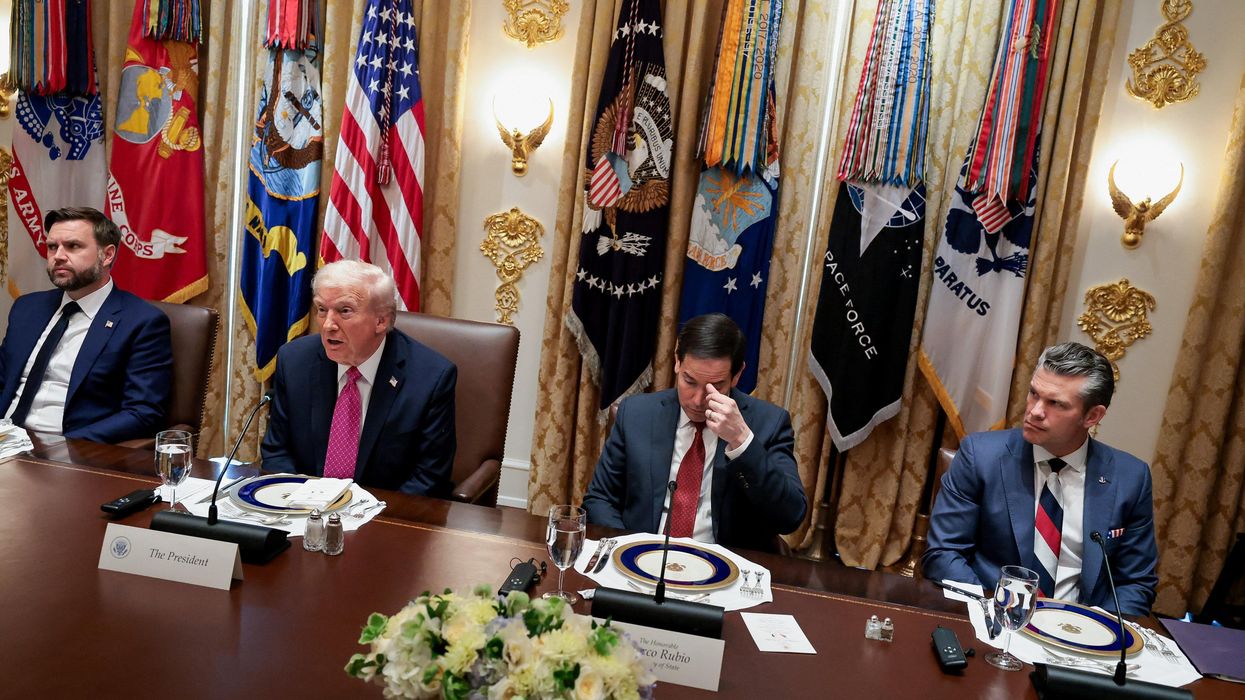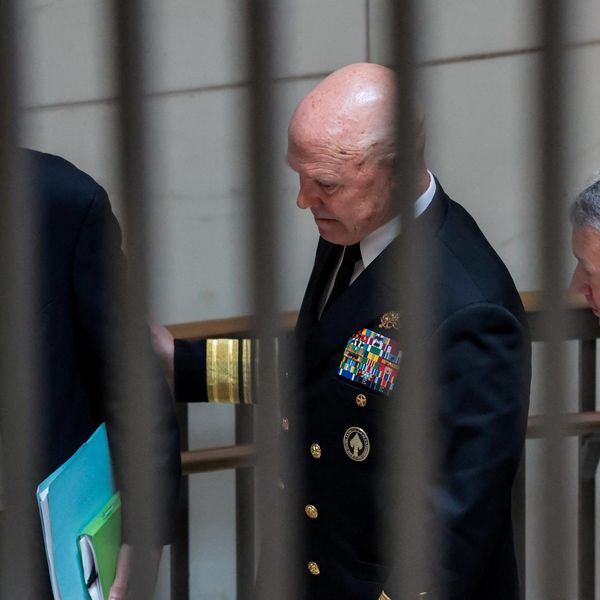As the talks to revive the nuclear accord known as the JCPOA are reaching the critical stage, the traditional Washington view holds Iran solely responsible for its antagonistic relationship with the United States. Carnegie Endowment research fellow Karim Sadjadpour is only the latest among the pundits who articulated that view in a recent long read in The New York Times.
That such a nuance-free view of Iran dominates the Washington discourse across the political spectrum renders any potential rapprochement with Tehran a far-fetched prospect. To break this vicious cycle of enmity, it could be more useful to recognize that since the 1979 Iranian revolution both sides have been guilty of missing opportunities to improve relations.
According to Sadjadpour, the United States has consistently tried to engage Iran, only to be rebuffed by the leadership of the Islamic Republic — and singularly its Supreme Leader Ayatollah Ali Khamenei — because the clerical regime is too dogmatically ideologically anti-American and fearful that any engagement with the “Great Satan” would erode its own legitimacy and lead, down the road, to its demise.
There is no question that anti-Americanism forms part of the DNA of the Islamic Republic. Initially rooted in the resentment over the extensive support Washington gave to the Shah Mohammad Reza Pahlavi who toppled to the revolutionaries in 1979, it took a life of its own as the regime consolidated.
Over the decades, Tehran systematically opposed U.S. policies even when its own interest in doing so was suspect at best. One obvious example is the Islamic Republic’s steadfast refusal to recognize Israel’s right to exist. Given the extensive U.S. commitment to Israel, this has fostered a powerful opposition to any normalization of relations with Iran.
More recent examples include Tehran moving away from its initially cautious response to the war in Ukraine to a more explicit support for Russia — Khamenei’s remarks to Russian president Vladimir Putin strongly suggest that he sees Russia’s war as part of a broader “resistance” to the U.S. and NATO-centric world.
That said, however, the Islamic Republic has also a pragmatic streak that repeatedly led its leaders to make overtures to Washington. The moderate presidents Ali Akbar Hashemi-Rafsanjani and Mohammad Khatami sought to reach out to the United States throughout the 1990s and 2000s, without much success. Of note, Iran helped the United States overthrow the Taliban regime in Afghanistan after 9/11, only to be slapped by then-President George W. Bush as part of his infamous “axis of evil.” The Bush administration’s hostility toward Iran during that time contributed significantly to the election of a populist hardliner Mahmoud Ahmadinejad, which strained relations even further.
The conclusion of the JCPOA in 2015, under presidents Barack Obama and Hassan Rouhani, was a proof that, with the right leadership, both sides can set aside their deep antagonisms and pragmatically focus on achieving deals for mutual benefit. In that period, Iran also de-facto cooperated with the United States against the Islamic State (ISIS) in Iraq. Khamenei, for all his anti-Americanism, hinted that a successful implementation of the JCPOA might open the way for dialogue on other issues dividing the United States and Iran, such as the broader security in the Middle East and Persian Gulf.
This by no means implied that Tehran took some sort of strategic decision to normalize relations with Washington. The JCPOA did not lead to any significant moderation of Iran’s regional policies — it wasn’t supposed to, but it created a better climate for engagement. Meanwhile, the regime continued its cruel policy of holding American citizens de-facto hostages of its anti-American hostility. Powerful forces within the system had vested interests in perpetuating this enmity. What the JCPOA created was an opening that could have challenged those entrenched interests and steered Iran in a more liberal and transparent direction.
Donald Trump chose to ignore these opportunities. Instead, he withdrew from the JCPOA (which was delivering on its objective to keep Iran away from the nuclear bomb) and imposed the “maximum pressure” campaign that was purported meant to achieve a “better deal.”
Trump wanted it so badly that, as Sadjadpour claims in his article, he requested to meet Rouhani on no less than eight occasions. Although these requests generated some debate in Iran of whether they should have been accepted, Trump’s failure to offer any substantive sanctions relief convinced the Iranians not to reward him with what they saw as merely a photo opportunity. No “better deal” arrived, and Iran has accelerated its nuclear program. The pro-JCPOA moderates, meanwhile, were weakened to a point that the hardliners felt emboldened enough to stage-elect their own favorite candidate for president — Ebrahim Raisi — brushing aside even the narrow confines of pluralism allowed in the Iranian system and cracking down harshly on previously tolerated dissent.
Joe Biden’s election offered a chance to quickly rescue relations with Iran from a Trump-era freefall. However, the Biden administration missed that chance by refusing to rejoin the JCPOA swiftly via a presidential executive order while it still had a willing partner in the Rouhani government.
Negotiating with the hardline Raisi administration has predictably proved more difficult, as it partially represents constituencies intensely hostile to the idea of improving relations with Washington. Yet as the subsequent negotiations have shown, there are pragmatists also within the hardline camp: after much criticism of the Rouhani-Zarif team for supposedly giving in too much, the Raisi team has arrived at the same place: recognizing that any diplomatic negotiation involves gives and takes.
It is now the responsibility of both governments to ensure that the revival of the JCPOA does not add to the long list of missed opportunities. Iranians should not overplay their hand as closer relations with Russia and China are no substitute to a re-integration into the world economy, where the United States still plays a leading role. Meanwhile, Washington needs to recognize that Iran’s demands to provide some reassurances that the sanctions relief would survive a next U.S. administration, particularly if Republicans were to return to the White House, is not an ideological aberration, but only prudence: you don’t need to be a fanatical anti-American not to want to be fooled twice.
The road to ending the U.S. – Iran enmity lies in pragmatically seizing on the opportunities for engagement and building on them. Anti-Americanism continues to be a powerful ideological force within the Iranian regime. Yet for all their rhetoric, the leaders in Tehran are not impervious to the notion of the national interest. Reducing tensions with a vastly superior power is clearly in the interests of Iran. Likewise, at a time when the United States faces potent challenges from Russia and China, de-escalating tensions with a middling power in the Persian Gulf that poses no vital threat to U.S. security should be a low-hanging fruit.
This article reflects the personal views of the author and not necessarily the opinions of the S&D Group or the European Parliament.
















